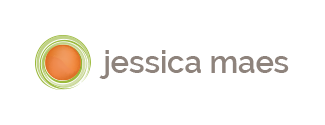An Analysis of Cohesion in Sport and Performance
By Jessica Maes
In the study of cohesion, Tuckman’s Stages of Group Development defines four stages:
- Forming: When a group/team is forming and setting the ground rules for the group/team.
- Storming: When the group/team begins to communicate with each other but each group/team member still sees themselves as an individual.
- Norming: When the group/team begins to accept that working together is beneficial.
- Performing: When the group/team is operating as one unit rather than as individuals.
There are four constructs related to team cohesion, each with a focus on either social needs or task demands:
- GI-S (Group Integration-Social): Refers to the degree to which an individual feels bonded to the group as a whole to meet social needs.
- GI-T (Group Integration-Task): Relates to the extent to which an individual is bonded to the group as a whole to meet task demands.
- ATG-S (Attraction to the Group-Social): Involves the attraction to the group and its members to satisfy social needs.
- ATG-T (Attraction to the Group-Task): Focuses on the attraction to the group and its members to meet task demands.
These constructs seem to be part of a framework or measurement model for understanding and assessing team cohesion. Assessing both social and task-related aspects is crucial for a comprehensive understanding of how well a group/team is functioning.
Click here to read my other post on cohesion titled: Mental Skills Training: 3 Team Cohesion Strategies to learn more about ways to work on group/team cohesion!
 Jessica is a first-year master’s student in the Sport, Exercise, & Performance Psychology program at the University of Wisconsin – Green Bay. She earned a bachelor’s degree in English from the University of Wisconsin – Parkside and is currently a Writing Tutor at The Learning Center at UWGB. She is also certified as a grant writer from the University of Wisconsin – Eau Claire and from Learn Grant Writing. Connect with Jessica on LinkedIn.
Jessica is a first-year master’s student in the Sport, Exercise, & Performance Psychology program at the University of Wisconsin – Green Bay. She earned a bachelor’s degree in English from the University of Wisconsin – Parkside and is currently a Writing Tutor at The Learning Center at UWGB. She is also certified as a grant writer from the University of Wisconsin – Eau Claire and from Learn Grant Writing. Connect with Jessica on LinkedIn.
